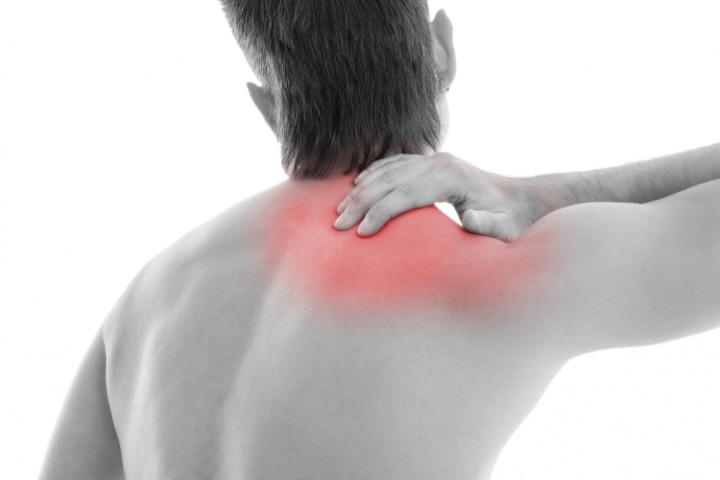Facet joint arthropathy is a condition that affects the joints in the spine, leading to joint degeneration and facet joint syndrome. This condition can cause significant discomfort and difficulty in movement.
Facet joint arthropathy is a condition that affects the spinal joints, specifically the facet joints. These joints are located on either side of the spinal column and connect each vertebra to the adjacent vertebra. When these joints degenerate or become damaged, it can lead to facet joint arthropathy.

Photo Credit: pch.vector
Spinal arthropathy is a condition that affects the joints of the spine, including the facet joints. Facet joint dysfunction, on the other hand, refers to the improper functioning of the facet joints. Both spinal and facet joint dysfunction can contribute to the development of facet joint arthropathy.
Spinal arthropathy is a degenerative condition that affects the joints of the spine. It can occur as a result of natural aging, wear and tear, or other underlying medical conditions such as osteoarthritis. Over time, the spine’s joints can become inflamed, swollen, and painful, leading to reduced mobility and discomfort.
Facet joint dysfunction refers to the improper functioning of the facet joints. It can occur as a result of injury, disease, or degeneration. When the facet joints don’t function properly, it can cause pain, stiffness, and reduced mobility in the affected spine area.
By understanding spinal arthropathy and facet joint dysfunction, we can better understand the development of facet joint arthropathy and how to manage it effectively.
Facet joint arthropathy can cause a range of symptoms that can vary in severity. The most common symptoms include:
Cervical facet joint pain is felt in the neck, while lumbar facet joint arthropathy is felt in the lower back. These symptoms are caused by the loss of cartilage in the facet joints, which leads to bone-on-bone contact and inflammation.

Photo Credit: Racool_studio
Cervical facet joint pain affects the neck and can cause a range of symptoms, including:
These symptoms can be mild or severe and can impact daily activities and quality of life.
The degeneration of the facet joints in the spine causes facet joint arthropathy. The facet joints are small joints between the vertebrae, allowing the spine to move flexibly. Over time, these joints can wear down and become damaged, leading to facet joint arthropathy.
Facet joint disease is another key factor in the development of facet joint arthropathy. This disease causes inflammation and damage to the facet joints, leading to pain, stiffness, and reduced mobility in the spine. It can be caused by a range of factors, including:
Other underlying conditions, such as spinal stenosis or herniated discs can also cause facet joint arthropathy. These conditions can place additional stress on the facet joints, leading to damage and degeneration over time.
Joint degeneration is a key cause of joint arthropathy. This can occur as part of the natural ageing process, as the cartilage that cushions the joints wears down over time. This cartilage is a cushion between the bones, helping absorb shock and prevent damage to the joints.

Photo Credit: DCStudio
As the cartilage wears down, the bones can start to rub against each other, causing pain, inflammation, and stiffness. Over time, this can lead to the development of facet joint arthropathy.
Facet joint arthropathy can be difficult to diagnose due to the similarity of its symptoms to other conditions. Your healthcare provider will begin by considering your medical history, symptoms, and conduct a physical examination. If facet joint arthropathy is suspected, medical imaging may be recommended.
Diagnostic imaging tests such as X-rays, magnetic resonance imaging (MRI), and computed tomography (CT) scans can provide detailed images of the spine. These images can help your healthcare provider identify any abnormalities or degenerative changes to the facet joints.
Facet joint arthrosis is a condition in which the facet joints become damaged and cause pain. This condition can be diagnosed by injecting a local anaesthetic into the facet joint, which should provide immediate pain relief. If pain relief is achieved, this is considered a strong indication of facet joint arthrosis as the cause of the pain.

Photo Credit: Freepik
Various treatment options are available for joint arthropathy, depending on the severity and specific symptoms of an individual’s condition. Treatment approaches can be broadly categorised into non-surgical and surgical options. Here are some of the most common treatment options:
If non-surgical treatments do not provide adequate relief, surgical options may be considered:
It’s worth noting that surgical treatments for facet joint arthropathy are typically considered a last resort after non-surgical options have been exhausted. Your healthcare provider can advise you on the most appropriate treatment options for your specific condition.

Photo Credit: master1305
Living with facet joint arthropathy can be a challenge, but there are several things you can do to manage your symptoms and improve your overall well-being. Here are some tips:
Regular physical activity is essential for maintaining spinal health and managing facet joint arthropathy. Low-impact exercises such as walking, swimming, and cycling can help improve flexibility and reduce pain. Be sure to consult with your healthcare provider before starting any exercise program.
Poor posture can put undue stress on the facet joints, leading to pain and discomfort. To maintain good posture, sit and stand up straight, avoid slouching, and use ergonomic furniture that supports the natural curvature of your spine.
Cold therapy can help reduce inflammation and swelling, while heat therapy can soothe sore muscles and improve blood flow. Try using ice packs or heating pads on the affected area for 20 minutes, several times a day.
Your healthcare provider may prescribe medications to help manage your symptoms, such as nonsteroidal anti-inflammatory drugs (NSAIDs) or muscle relaxants. It’s important to take these medications as directed and to let your provider know if you experience any side effects.
In addition to traditional treatments, alternative therapies such as acupuncture, massage therapy, and chiropractic care may also help manage facet joint arthropathy. Discuss any alternative treatment options with your healthcare provider before trying them.
Living with facet joint arthropathy can be difficult, but you don’t have to go through it alone. Consider joining a support group or talking to a mental health professional to help you cope with the challenges of this condition.
By following these tips and working closely with your healthcare provider, you can manage your symptoms and improve your quality of life with facet joint arthropathy.
Common symptoms of facet joint arthropathy include cervical facet joint pain and lumbar facet joint arthropathy. These may manifest as localized pain, stiffness, and limited range of motion in the affected joints.
Facet joint arthropathy is primarily caused by joint degeneration and facet joint disease. These conditions can be triggered by factors such as aging, repetitive stress, injury, and genetic predisposition.
Diagnosing facet joint arthropathy involves a combination of medical imaging, such as X-rays or MRIs, and physical examinations. The presence of facet joint arthrosis is often indicative of this condition.
Treatment options for facet joint arthropathy include non-surgical approaches, such as physical therapy, medication, injections, and surgical interventions for more severe cases. The aim is to manage facet joint syndrome and alleviate facet arthropathies.
Living with facet joint arthropathy involves adopting lifestyle changes and self-care strategies. This may include maintaining a healthy weight, exercising regularly, practising good posture, and using ergonomic aids to support spinal health.